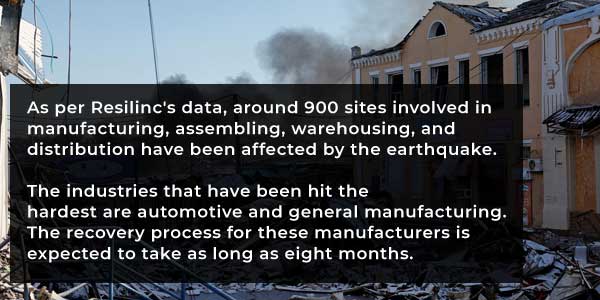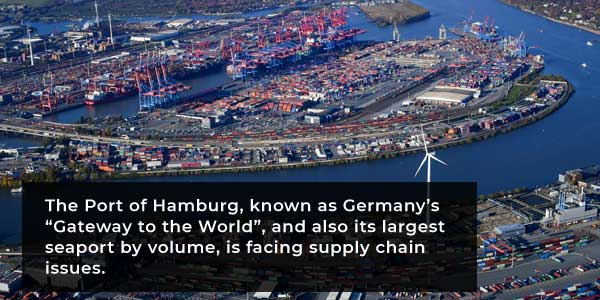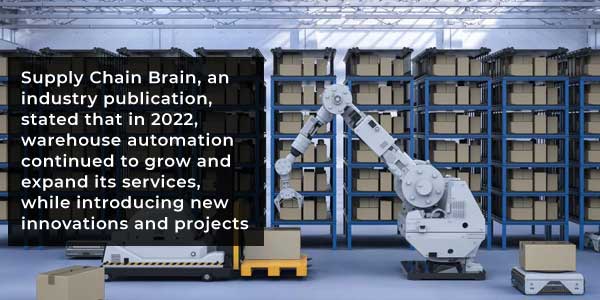February 2023

We create avenues for the industry to gain more insights into emerging trends, industry-specific problems of national importance, and global best practices in logistics & supply chain management. We enable the industry to cut down transaction costs, increase efficiency, and enhance profitability. We are committed to sensitizing the industry about macro-level issues and helping find solutions to them.
News highlights from the world of supply chain and logistics that appeared in media over the last one month
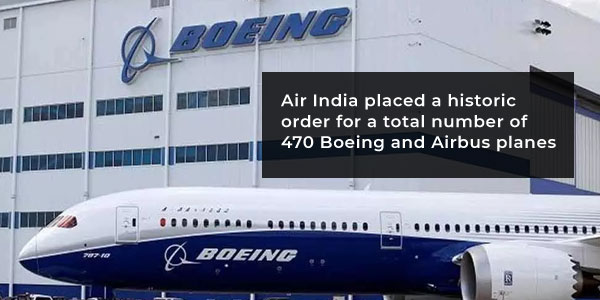
|
||||||||||||
|
In mid-February, Air India placed a historic order for a total number of 470 Boeing and Airbus planes in its bid to meet the surging demand for air travel in the country.
Boeing India President Salil Gupte told ET Infra that the company plans to use India's aerospace supply chain more frequently in the coming years, thereby deepening its engagement with the Indian industry. The company has firmed up its local presence in recent years through Tata Boeing Aerospace Ltd, a joint venture with the Tata Group. "We are working with the government via the MRO associations and CII (Confederation of Indian Industry) Aerospace Committee. The government has been a great partner with us over the last few years on addressing some of these challenges that have held back MRO previously," Mr. Gupte told the publication.
Boeing has also announced that it plans to spend around Rs 200 crore to create a logistics hub in India to cater to its regional customers. Continuing to expand its footprint in the country, Boeing is investing in building capabilities that support an efficient and cost-effective service solution for regional customers to maintain higher fleet utilization and mission readiness rates. In the initial phase of the operations, the India Logistics Center will focus on supporting airline customers as the civil aviation sector continues to rapidly advance towards becoming the world’s third-largest passenger market, surpassed only by the U.S. and China. "The further expansion of our footprint in India with the India Logistics Center supports our long-term investment strategy for the country," said Salil Gupte, President, Boeing India in a press statement.
|
||||||||||||

|
||||||||||||
|
According to Stephen Pagliuca, who serves as a Senior Advisor at Bain Capital, India will keep attracting foreign direct investment (FDI) since companies want to broaden their supply chains and move away from China and Russia. Due to India's stable economic growth and positive demographics, it has become a go-to location for investors seeking to access its growing market."India is a very strong market. You have seen a large increase in private equity and direct foreign investment in India and I think that will continue especially as many companies pull back from China and Russia for strategic reasons. So, India will be the beneficiary of that capital. India should be a very attractive place for investors to invest in," Mr. Pagliuca told CNBC TV18.
|
||||||||||||

|
||||||||||||
|
Welspun One Logistics Parks has entered into an agreement with the Government of Uttar Pradesh (UP) to invest INR 2,000 crore in the development of warehousing and logistics parks in the state, with a focus on expanding its presence in the warehousing sector in North India. The company plans to build Grade-A warehouse facilities and logistics parks using land parcels in Lucknow, which will span approximately 6 million square feet. This development is expected to generate employment for around 6,000 individuals.
|
||||||||||||
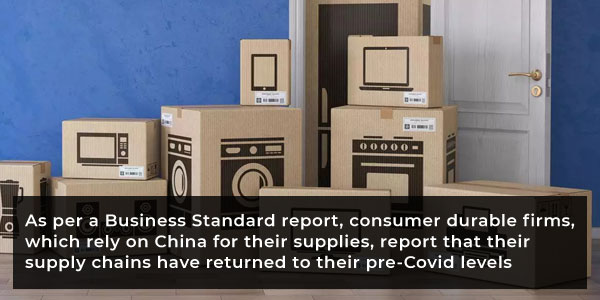
|
||||||||||||
|
As per a Business Standard report, consumer durable firms, which rely on China for their supplies, report that their supply chains have returned to their pre-Covid levels as China has discontinued its zero-Covid strategy. However, while the constraints are easing for automotive firms, they remain cautious about commodity prices as the increase in demand from China could drive them up.
|
||||||||||||
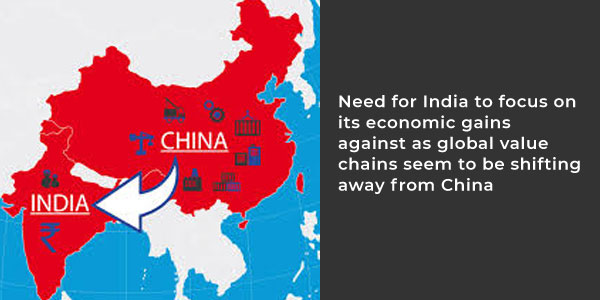
|
||||||||||||
|
Oorja Tapan, Assistant Professor at the School of Internal Security, Defence and Strategic Studies (SISDSS), Rashtriya Raksha University, Gandhinagar, writing for Financial Express highlighted the need for India to focus on its economic gains against as global value chains seem to be shifting away from China. India’s G20 Presidency will help the country with this strategic aim, Ms. Tapan wrote.
|
||||||||||||
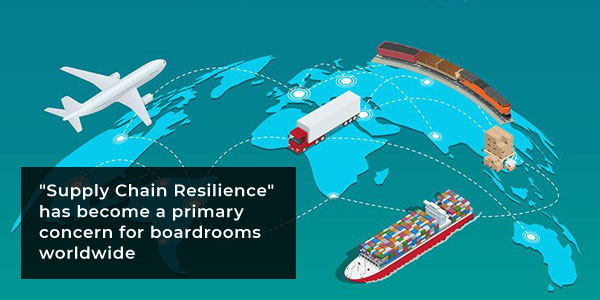
|
||||||||||||
|
The "resilient supply chain model" presents a chance for India to use alliances such as QUAD, SCRI, and IPEF to draw global value chains towards its own manufacturing and industrial sector, in order to promote the vision of 'Atmanirbhar Bharat', she added.
CII Blog, the article publishing platform of the Confederation of Indian Industry, in a recent article looked at the state of supply chain resilience in the digital era. The article underlined how, in the aftermath of the pandemic, the subject of "Supply Chain Resilience" has become a primary concern for boardrooms worldwide. With the increase in supply chain risks, establishing resilience has become vital for business survival. Globalization and worldwide connectivity are contributing to the growing complexity of supply chains and magnifying the impact of disruptions that may have previously been limited to local areas. By investing in resilience, businesses can proactively address the significant vulnerabilities in their supply chains that expose them to various risks, the article stated. A recent survey conducted by CII on digitalizing supply chains revealed that almost 92% of manufacturing companies in India have either created or are in the process of creating a digital roadmap. This indicates that business leaders recognize the significance of digitization in revolutionizing supply chains, it noted.
|
||||||||||||

|
||||||||||||
|
Amit Sharma of Fibre2Fashion explored how technology can help boost India’s supply chain infrastructure. He wrote that over the next five years, there is enormous potential for growth in the supply chain management industry in India. Based on global standards, India's B2B e-commerce market is expected to attain a gross merchandise value (GMV) of $90-100 billion by 2030. By integrating technologies such as Artificial Intelligence (AI), blockchain, cloud computing, and the Internet of Things (IoT), a robust supply chain management infrastructure can be developed for the country. This will enable Indian supply chain management platforms to enhance their resilience and address challenges more effectively, he highlighted.
|
||||||||||||
|
INTERNATIONAL
|
||||||||||||
|
Will connect again next month, with a comprehensive dossier of news, trends and events from the industry. |
||||||||||||
|
||||||||||||
